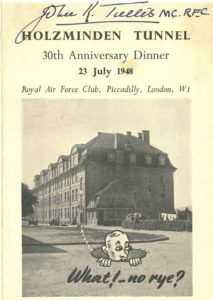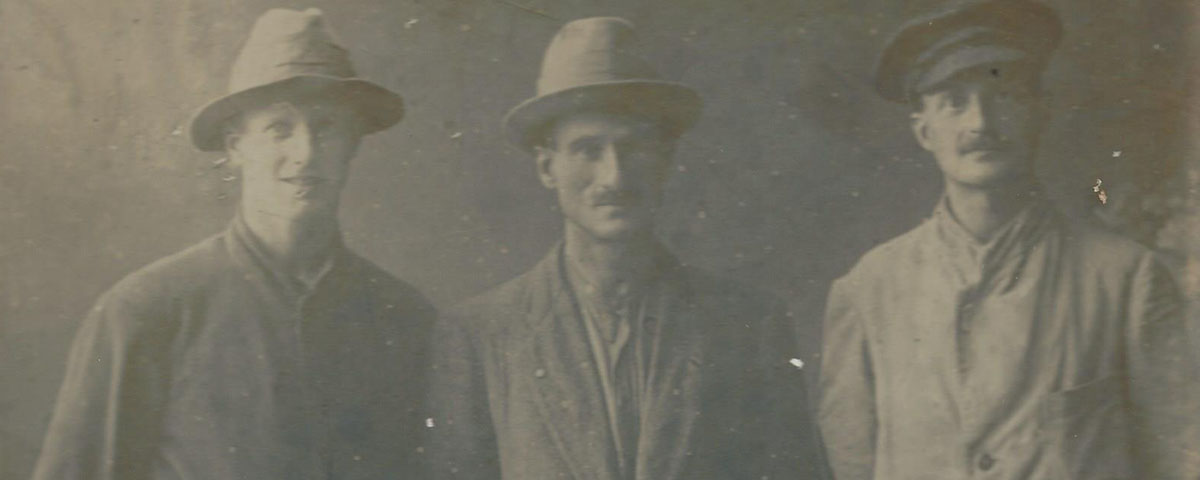In 1917 the most troublesome, breakout-prone Allied POWs were sent to a land-locked prison called Holzminden. By assembling such a group with dozens of attempts under their belts, the Germans unwittingly created an “Escape University”. Its practiced artists taught each other how to detect weaknesses in the camp’s defenses, build secret caches, create makeshift compasses, smuggle in supplies, tailor German uniforms, pick locks, and engineer any number of elaborate constructions to get beyond the walls. Nine months after Holzminden opened, its prisoners orchestrated the war’s greatest escape. Twenty-nine got out, 10 made it to freedom, and their effort inspired the Allies in the darkest time of the war. In WWII, these “escape artists” guided MI-9, the secret British escape and evasion service, that aided tens of thousands of men reach freedom after being caught behind enemy lines.
Here are their hard-fought lessons that I gleaned from reading dozens of their memoirs, letters, and notes on their lectures:
- 1. Be prepared. In WWI pilots and soldiers had little to no supplies if they found themselves behind enemy lines. A small compass, knife, maps, a knife, portable food, first aid kit—all these will help evade capture in the first hours/days.
- 2. Once captured, your best chance of escape is the immediate one. Take a breath, assess your surroundings, and go when the opportunity strikes. In transport, there are few guards and you are likely closer to safer ground. The further into enemy territory you go, the harder things become. Once in a camp, your options become more limited.
- 3. When you find yourselves in a prison—or the like—again, your chances of breaking out are often in the earliest days. Guards have not yet detected weaknesses in security. Take advantage.
-

(Courtesy Keil Tullis) 4. If it looks like you are in for the long-term, remember that no prison is impregnable, regardless of commandant’s warnings otherwise. Reconnoiter the whole place. Walk the perimeter. Time guard rotations and movements. Watch entrance and exits. Who is allowed in and out? What kind of passes do they need to show? Are interior walls solid? What kind of locks secure doors? Are there dark areas where the lights do not shine? Are there work duties that allow greater movement? What kind of uniforms do staff where? Are their tools that can be stolen? Is communication beyond the walls possible? Can supplies be smuggled inside? Opportunities exist. They only need be found.
- 5. Find partners. Solo escapes are often the most difficult. Ideas need to be hashed over. Many hands make light work. You need lookouts, diversions, skills that others have. Morale support is also imperative. Further, once outside the walls, traveling in pairs or threes, is often easier. Watches can be set so one can rest. Again, having someone to lean on in tough moments is helpful.
- 6. The former notwithstanding, secrecy is essential. Spies are often everywhere. A slipped word, an indiscreet remark, can foil the best of plans. Keep the cabal small, and information limited to those who need to know.
- 7. Allies among the guards. Foster these. Make nice. A bribe might do. They need not know your plans—or even intentions to escape—but they can provide information, and sometimes key supplies.
- 8. Be patient. There will be roadblocks thrown into your path. That is to be expected. Do not lose hope.
- 9. It is not enough to get beyond the walls, one has to make it to a place of safety, whether a border or otherwise. Plan accordingly. Secure supplies for your run. Food, good boots, a compass, and maps are key. A headstart also helps, so weave that into your plans. The longer you have to get away from the prison before you are discovered missing, the wider the search range, the better shot you have of getting away for good. Have a cover plan too. What if you run into a local or even a policeman? What story do you have to tell? Travel by night. Rest by day. Steer far from populated areas. Never cross a bridge if you can ford the barrier below.
- 10. Last, but certainly not least, luck favors the bold. Often the most audacious plans are rewarded with the most success. The massive tunnel escape at Holzminden proved this lesson.
Neal Bascomb [nealbascomb.com] is the award-winning, bestselling author of The Winter Fortress, Hunting Eichmann, The Nazi Hunters, Red Mutiny and other books. A former journalist, he is a widely recognized speaker on war and has appeared in a number of documentaries. To learn more about the Holzminden escape, read Bascomb’s new book, The Escape Artists: A Band of Daredevil Pilots and the Greatest Prison Break of the Great War (Houghton Mifflin Harcourt, New York, $28).





